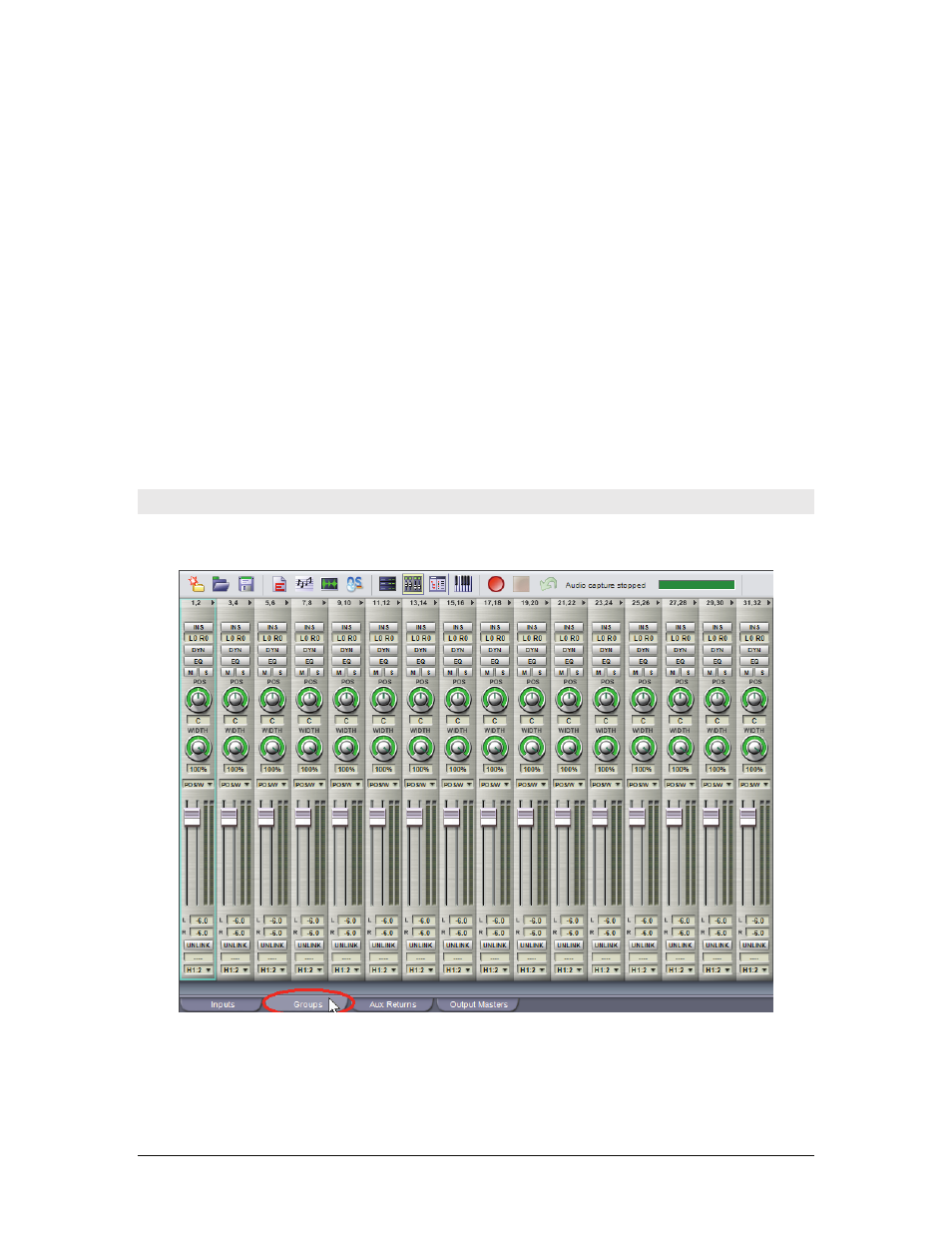Groups tab – Teac GigaStudio 4 User Manual
Page 139

GigaStudio 4 Reference Manual
139
You insert up to four Aux effects into the effect insert slots of an Aux Return, select the output where you want
to send the processed signal using the Aux Return’s Output field drop-down menu, then regulate the level
going to the output with the Aux Return fader. The output is typically the same output being fed by various
channel outputs (i.e., the Output Master channels, which connect to your audio interface).
Note: In ReWire mode, the outputs go to ReWire inputs rather than hardware outputs. See the ReWire chapter
for more details.
Gain-Staging with Aux Sends and Returns
Note that there are two places to adjust levels. Turning up an Aux Send control sends more signal to the Aux
Return effect(s), and the Aux Return fader sets the level coming out of the effect(s). As an example of how these
work together, consider a situation where you want lots of reverb on a percussion part, but little on a piano
part. You would turn up the percussion channel’s Aux Send control a fair amount, and the piano channel’s Aux
Send a lesser amount. Once you have the ideal balance, you can then use the Aux Returns level control as a
“master” reverb level, where you can add more or less reverb without upsetting the balance set by the Aux
Send controls.
Also, use the Aux Send controls to avoid overloading effect inputs. You can always add more level in the Aux
Return section.
Groups Tab
Group channels are almost identical to Input channels, except that multiple channel pair outputs from Input
channels can feed the same Group channel pair.
Groups provide a “master”-like function. Here’s a typical example of how to use Grouping.
You’ve loaded four instruments (trumpet, two saxes, and trombone) to create a brass section. You have a
perfect balance of the four instruments, but now you want to increase or decrease the level of the entire section.